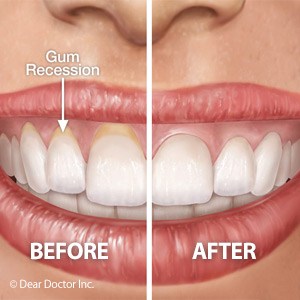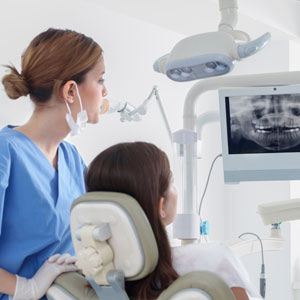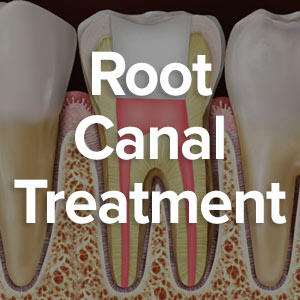
Your gums can take a lot — they’re resilient and they endure a variety of abrasive foods over a lifetime. But resilience isn’t the same as invulnerability: your gums can be weakened by periodontal (gum) disease or by over-aggressive brushing that causes them to shrink away (recede) from the teeth they protect.
Unfortunately, it’s not a rare problem — millions suffer from some degree of gum recession, caused mainly by gum disease. This aggressive infection arises from bacteria in dental plaque, a thin film that builds up on tooth surfaces due to inadequate oral hygiene. Fortunately, gum disease can be effectively treated in its early stages by removing plaque above and below the gum line. Diseased gums will quickly rebound to their normal health.
Unfortunately, though, heavily recessed gums from advanced stages of gum disease (as well as those who’ve inherited thinner gum tissues and are more susceptible to recession) may not come back fully without help. This can affect the health and survival of affected teeth, as well as your appearance.
Plastic periodontal surgery can help restore these lost tissues. There are a number of procedures that can be used depending on the exact nature of the recession, and most involve some form of tissue grafting. A specimen of donated gum tissue (either from another portion of the patient’s gums or a thoroughly cleansed and properly processed donation from another person) is surgically attached to the gums at the recession site.
The graft can be completely freed from the harvest area or in some cases a part of it remains attached to receive blood supply while the rest is grafted to the site. These procedures, especially the latter, require meticulous skill and sophisticated microsurgical techniques to make an effective attachment. If the tooth root is involved, it must be thoroughly prepared beforehand through polishing and decontamination to ensure the new graft will take. The graft is sutured in place and sometimes covered with a moldable dressing for protection.
As the area heals, the tissues begin to grow around the graft, restoring better coverage for the tooth. Coupled with comprehensive gum disease treatment, this form of plastic surgery can restore new health to teeth and a transformed smile.
If you would like more information on treating gum recession with plastic surgery, please contact us or schedule an appointment for a consultation. You can also learn more about this topic by reading the Dear Doctor magazine article “Periodontal Plastic Surgery.”




No comment yet, add your voice below!